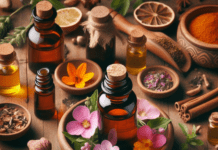Exogenous retroviral infections occur when a retrovirus, a type of RNA virus, transmits from one species to another. These cross-species transmissions can have significant consequences, potentially leading to new diseases in the recipient species. Understanding the factors contributing to exogenous retroviral infections is crucial for preventing future outbreaks and protecting public health.
Retroviruses, a unique class of viruses with RNA as their genetic material, can be broadly categorized into endogenous and exogenous. While endogenous retroviruses (ERVs) are remnants of ancient infections integrated into our genome and passed down through generations, exogenous retroviruses (ERVs) are invaders, originating from external sources and wreaking havoc on our health.
Demystifying these stealthy pathogens is crucial, as they threaten both humans and animals.
Defining the Enemy: What are Exogenous Retroviruses?
Imagine a virus that hijacks your own DNA to replicate and spread. That’s the essence of ERVs. Unlike their DNA-based counterparts, ERVs are capable of converting RNA into DNA through reverse transcriptase. This DNA is then inserted into the host’s genome, turning infected cells into viral factories.
A Tale of Two Viruses: ERVs vs. ERVs
It’s easy to get confused between ERVs and their endogenous counterparts. Here’s the key difference:
- Endogenous retroviruses (ERVs) are remnants of past infections that have become permanent residents within our genome, often rendered harmless through mutations. They make up about 8% of the human genome and usually don’t cause disease.
- Exogenous retroviruses (ERVs) are active invaders recently acquired from external sources like infected animals or humans. They can cause serious illnesses in both humans and animals.
Notorious Culprits: Examples of ERVs and the Diseases They Cause
Some ERVs have gained notoriety for the diseases they cause:
- Human Immunodeficiency Virus (HIV): The virus responsible for AIDS, HIV weakens the immune system, leaving individuals vulnerable to opportunistic infections.
- Human T-lymphotropic Virus (HTLV): This virus can cause adult T-cell leukemia and HTLV-1-associated myelopathy/tropical spastic paraparesis, a neurological condition.
- Mouse Mammary Tumor Virus (MMTV): This virus can induce mammary tumors in mice, highlighting the potential of ERVs to contribute to cancer development.
- Feline Leukemia Virus (FeLV): This virus can cause leukemia, lymphoma, and other diseases in cats.
Unveiling the Secrets: Modes of Transmission of ERVs
ERVs employ various cunning strategies to spread:
- Sexual contact: Unprotected sex is a major transmission route for HIV and HTLV.
- Blood transfusion and organ transplantation: Infected blood or organs can harbor ERVs, highlighting the importance of screening procedures.
- Breastfeeding: While rare, some ERVs can be transmitted through breast milk.
- Vertical transmission from mother to child: This can occur during pregnancy, childbirth, or breastfeeding.
Mitigating the Risk: Factors Influencing ERV Transmission
Several factors influence the risk of ERV transmission:
- Viral load: The greater the virus load in an infected individual, the greater the transmission risk.
- Immune status: A weakened immune system makes individuals more susceptible to infection and complications.
- Genetic susceptibility: Certain genetic variations can influence susceptibility to specific ERVs.
- Environmental conditions: Poverty, lack of access to healthcare, and unsafe living conditions can increase the risk of ERV exposure.
Building a Shield: Prevention Measures for ERVs
Fortunately, we have weapons in our arsenal to combat ERVs:
- Safe sex practices: Using condoms consistently reduces the risk of HIV and HTLV transmission.
- Screening of blood and organ donors: Rigorous screening procedures help ensure the safety of blood and organ donations.
- Antiretroviral therapy for pregnant women: HIV transmission from mother to child can be reduced significantly by this treatment.
- Vaccination for some animal ERVs: Vaccines exist for certain animal ERVs, like FeLV, protecting pets and preventing their spread.
Shining a Light: Diagnosing ERV Infections
Early diagnosis is crucial for managing ERV infections effectively. Here are some key diagnostic tools:
- Serological tests: Antibodies produced by the immune system in response to viruses are detected by these tests.
- Polymerase chain reaction (PCR): This highly sensitive technique detects viral genetic material.
- Viral culture: This method grows the virus in the laboratory, confirming its presence and identifying its specific strain.
Choosing the Right Weapon: Treatment Options for ERV Infections
Living with an ERV infection requires a multifaceted approach. Here’s an overview of available treatment options:
Antiretroviral Therapy (ART)
- For HIV: ART is the cornerstone of HIV treatment, combining multiple drugs to suppress viral replication and improve immune function. This can significantly prolong life expectancy and prevent transmission.
- For other ERVs: While not as established, researchers are exploring the use of ART for other ERVs like HTLV, with promising results in some cases.
Immunotherapy
- This approach bolsters the body’s own immune system to fight the virus more effectively. It’s still under development for ERVs, but early studies show potential in stimulating immune responses against infected cells.
Gene Therapy
- This futuristic approach aims to correct the genetic abnormalities caused by ERV integration. While still in its early stages, gene therapy holds promise for potentially curing ERV infections in the future.
Supportive Care
- Living with an ERV infection demands comprehensive care beyond antiviral therapy. This includes:
- Nutritional support: Maintaining good nutrition is crucial for a healthy immune system.
- Symptom management: Addressing symptoms like fatigue, pain, and anxiety can improve quality of life.
- Mental health support: The emotional toll of an ERV infection is significant. Providing access to mental health professionals is essential.
The Battle Rages On: Challenges and Future Directions
Despite the progress made, challenges remain:
- Drug resistance: ERVs can develop resistance to existing drugs, necessitating new treatment strategies.
- Accessibility: Many individuals, especially in resource-limited settings, lack access to proper diagnosis, treatment, and care.
- Holistic approach: While treatments exist, managing the long-term physical, mental, and social impacts of ERV infections involves more than just medication.
A Call to Action: Raising Awareness and Funding Research
More research and public awareness are essential to win the fight against ERVs. Here’s how you can contribute:
- Educate yourself and others: Sharing information about ERVs helps dispel myths and encourages responsible behavior.
- Support research organizations: Donations and advocacy efforts can accelerate the development of new diagnostics, treatments, and ultimately, a cure.
- Challenge stigma: ERV-infected individuals often face discrimination. Promoting understanding and empathy is crucial for creating a more supportive environment.
Conclusion
Demystifying ERVs, One Step at a Time
By understanding the nature of ERVs, their transmission routes, and the available tools for diagnosis and care, we can empower ourselves and our communities to combat these insidious pathogens. Remember, knowledge is power, and through collective action, we can build a future free from the threat of ERVs.
Resources for Further Reading:
- World Health Organization: https://www.who.int/hiv/en/
Thank you for joining me on this journey to demystify ERVs. Please share your thoughts, questions, and experiences in the comments below, and let’s continue the conversation!








